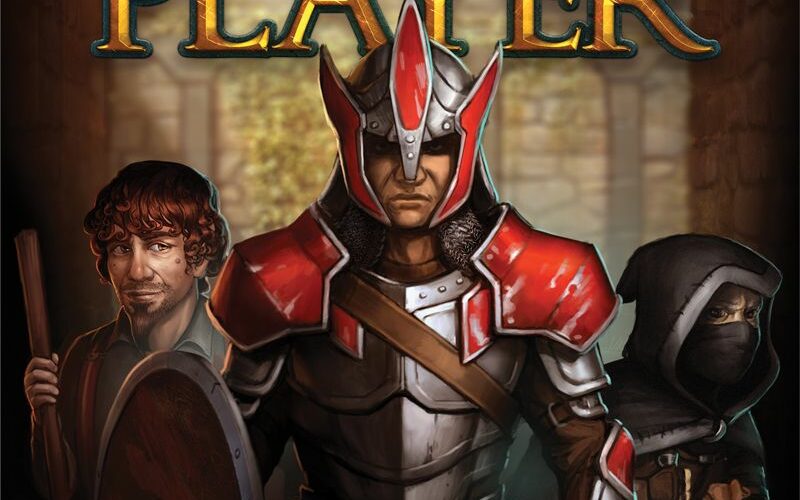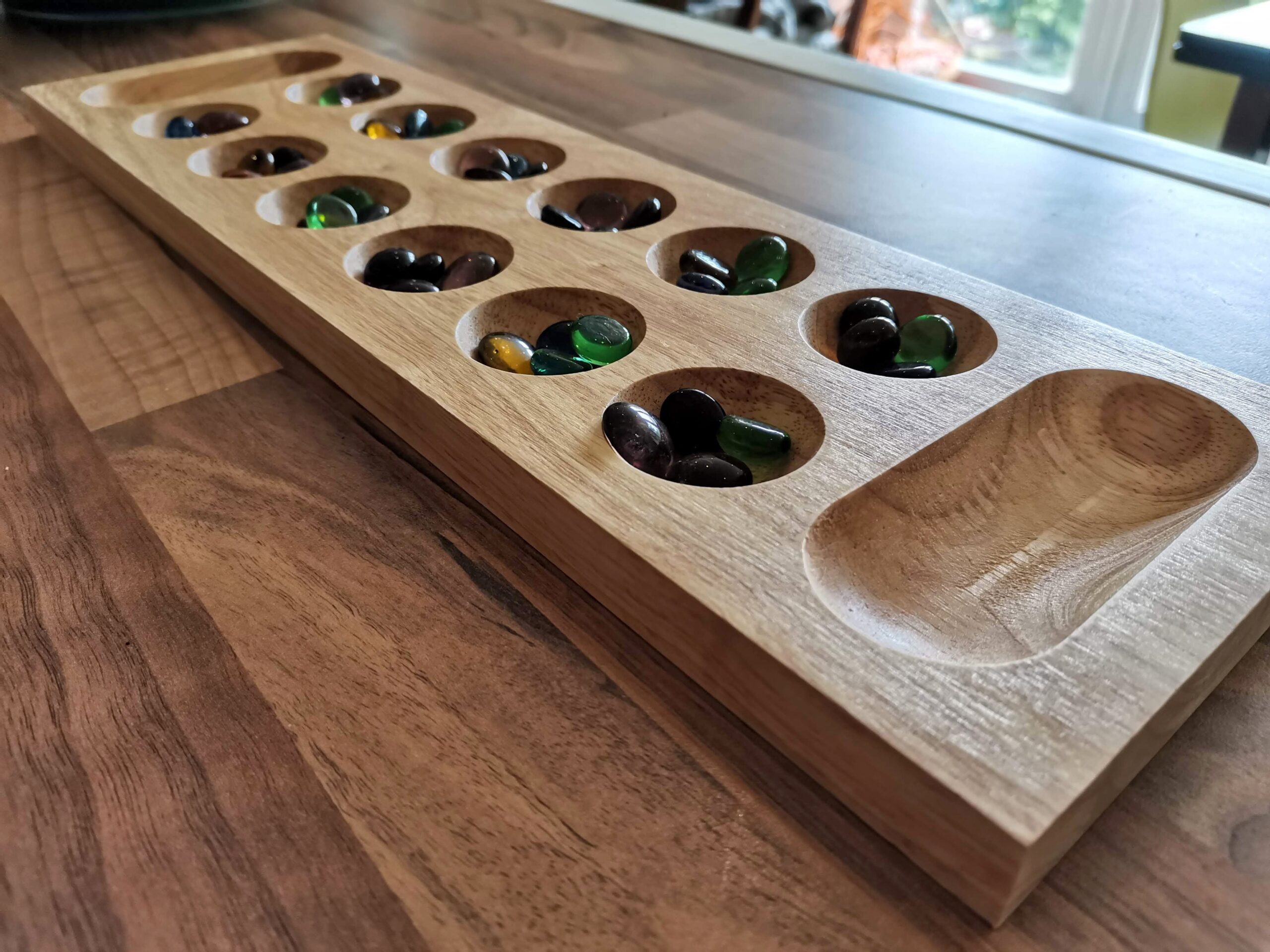Roll Player Review

A game about making a character for another game. Is that really a game? Actually yes, it most definitely is a game, and a fun game at that. If you stripped the theme away from Roll Player it’d be a game of dice-drafting and placement to meet certain goals, but by layering over the part of other games so many of us enjoy, designer Keith Matejka has done something very clever and very enjoyable.
Rolling up a new one
Let’s have a show of hands. How many of you love the start of a new role-playing game? Whether it’s tabletop or digital, who really enjoys that session zero – the session where you all make your characters for the upcoming game? Maybe you spend a week crafting a new rogue for your group’s new D&D game. Maybe you find joy in spending six hours in the character editor for Fallout 4, trying to make him look exactly like Steve Buscemi. For me it’s clicking the Randomise button at the start of a new game of Rimworld and tweaking the crazy quarter-dozen of people it churns out, trying to get the mix just right.

Keith Matejka (if the name seems familiar, I interviewed him a while ago) latched on to this concept and created a whole game out of it, and while it sounds like something that maybe shouldn’t work for a board game, it does.
The idea of Roll Player is that each player is creating a character for some game that doesn’t exist. At least, that game didn’t exist at first. The Monsters & Minions expansion gave your heroes creatures to battle, and Roll Player Adventures is a full-on campaign which you can bring your Roll Player characters into. Regardless, the aim of the game is just to craft that character. Your player board gives you your race (elf, human, orc, etc.), and randomly drawn cards give you your class, alignment, and backstory. So you might end up with a street urchin, halfling warrior who you’re trying to steer towards lawful good.

So how do you do it? Well, in an RPG you’d expect to spend points in various attributes like Wisdom, Dexterity, Strength and so on, and you do the same here. While there’s nary a D20 in sight, there’s still plenty of dice to be rolled.
What is this – Lords of Vegas?
Most of the game revolves around drafting dice from the initiative cards in the middle of the table. There’s a juicy choice here right away. The lowest value dice go on the earlier cards sooner in initiative order, and initiative is what dictates who gets to pick first from the card market each round. You might see a card for sale which completes your set of armour, potentially netting you a bucketload of points, but in order to be sure to claim it first, you’ve got to take that 1-pip black die. What are you going to do with it?

I’ll tell you what you’ll do with it. The same thing you do with all the other dice you pick up during the game. You put them in the sockets on your board in one of the attribute rows. Sounds easy, but there’s a ton of stuff to consider with every die placement. First up, each row has a goal value dictated by your class card. So your strength row might net you 4VPs for getting 18 points in it, but that means getting three 6-pip dice in there.
You’ve also got your backstory card to consider. You can get rewards here if certain coloured dice are in specific positions on your board at the end of the game. On top of that there’s a reward of two gold every time you take a yellow die, or there might be bonuses for collecting dice of certain colours based on cards you’ve bought. It might sound like a 1-pip placed in the wrong place would completely scupper you, but no, Roll Player has another trick up its wizard’s sleeve. Each attribute row has an associated bonus action which can help manipulate the dice you’ve already placed, among other things. Don’t like that 1-pip? Place a die in the top row to let you flip any already-placed die to its opposite side. All of a sudden that 1 is now a 6. Or you can swap dice, or bump them up or down a number. There’s lots of scope to change what’s already been done.
I tell you though, there’s something innately satisfying about socketing dice into little square holes. It reminded me of Lords of Vegas with all the coloured dice getting slotted into the board. The games are nothing alike, but it made me smile regardless. It may sound superficial of me, but I don’t think I’d enjoy the game as much if I placed the dice on top of the board.
Market-ready
I’ve only really touched on the card market, but it needs to be talked about, because it’s a really important part of the game. During the game, you’ll buy weapons which give you ongoing abilities, and skills which can be used once per round, as long as you can move your alignment cube in the direction the card dictates (do good things, the cube moves up towards good etc.). There’s an element of set-collection too, as you try to adorn your character in a complete set of armour, which will earn you points. There are also trait cards which do various things, and many of them offer you alternative routes for scoring at the end of the game.
Once you understand the impact of the cards and the competition for them, it suddenly places much more emphasis on the initiative order you get from claiming dice. Not to mention the fact that instead of buying a card, you can discard a card from the market row to gain two gold. It’d be a real shame if I discarded that piece of armour you need to complete your set, right?

The tussle and agonising choices the card market brings are so good. I really like the way that some of the cards can flip the game on its head too. There’s a great skill card that lets you flip and then reassign the dice on the initiative cards whenever you want to. Let’s say for example that all the dice get rolled as sixes, so you claim one, then use the skill to flip the remaining dice all to ones. Devilishly delicious.

The only thing I don’t really like is the way the market deck has cards removed from it in two- and three-player games. I understand why it does it, because the more powerful cards are at the bottom of the deck and you need to cycle through far enough to see them, but it means that some of the discarded cards back in the game box might be armour pieces you need to complete a set. Sure, you’ll get competition to claim them in a four-player game, but at least you know they’re all in the deck.
It’s a pretty small grumble though in the scheme of things.
Final thoughts
Roll Player is a very clever, very enjoyable game. The theme being creating characters for a game is so well chosen that it does some special things that might not be obvious. Firstly, it gets the players really invested in their characters, and their player boards. You get to make something that’s uniquely yours. The real magic though is the way it adds in so much game without slamming down a barrier in front of less-experienced board gamers.
The dice placement and its associated bonus actions. The dice manipulation. The card market and turn order strategy. Set-collection. Basic engine-building. In the wrong setting and wrong game they can be dense, confusing concepts and mechanisms. Somehow though, Roll Player feels light. I can try to teach this to just about anyone and feel confident in them having a good time, even if they don’t fully appreciate everything that’s going on or every option that’s at their fingertips.
As I mentioned above, there’s something indescribable and nebulous about the simple action of putting a die in a hole of the same shape. The tangible feeling of doing it is rewarding, without it being a toy or a gimmick. It’s just a nice thing to do, and in Roll Player you get to do it 18 times. Glorious.
If you’re worried about there not being enough meat on the bone for more hardcore gamers, you needn’t. While it’s not the heaviest game in the world, the dice-placement puzzle will have you scratching your head, as will adjusting your strategy on-the-fly when new, enticing cards pop into the market. Roll Player might be a couple of years old now, but there’s nothing that’s done this style of game better since its release in 2016, so if you’re after something a bit different that won’t swamp your table or make your wallet cry, it’s a great choice. I really like this game.
Review copy kindly provided by Thunderworks Games. Thoughts and opinions are my own.
Enjoying this article? Consider supporting me.

Roll Player (2016)
Design: Keith Matejka
Publisher: Thunderworks Games
Art: JJ Ariosa, Vincent Dutrait, Luis Francisco
Players: 1-4
Playing time: 60-90 mins













